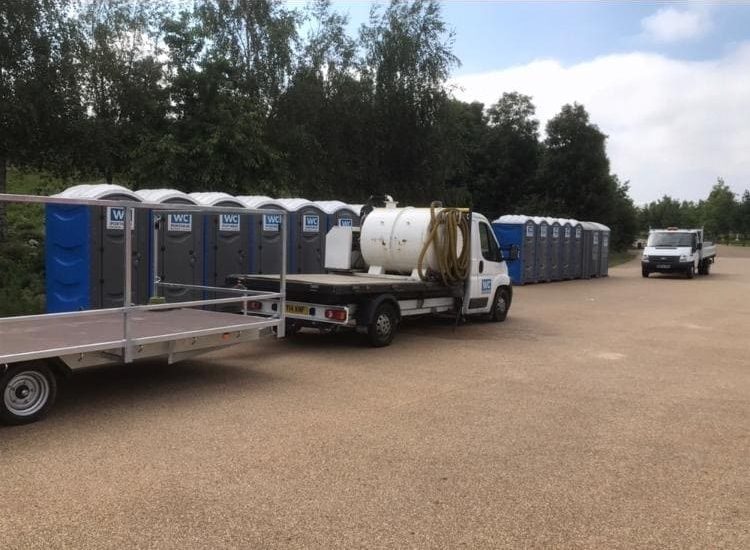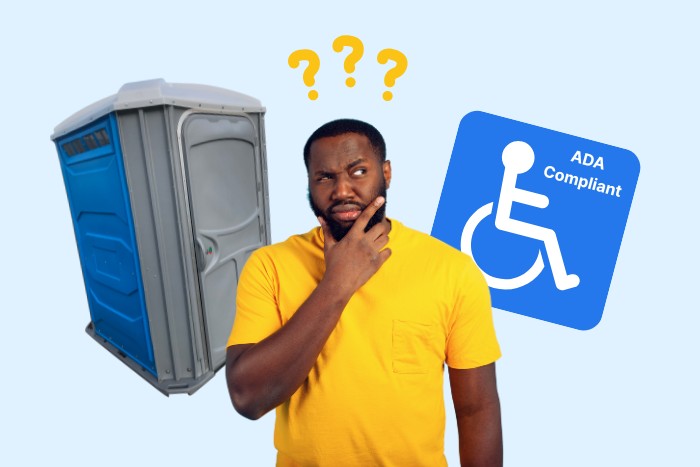In the UK, the Equality Act 2010 is key to making sure everyone is treated fairly, especially in public spaces. This includes providing accessible portable toilets. Let’s explore how portable toilets can meet these legal requirements, the challenges that might come up, and how to overcome them.
The Equality Act 2010: What You Need to Know
The Equality Act 2010 brings together many anti-discrimination laws. It aims to stop unfair treatment based on age, disability, gender reassignment, marriage and civil partnership, pregnancy and maternity, race, religion or belief, sex, and sexual orientation. It says that service providers, like those offering portable toilets, must make reasonable changes so disabled people aren’t at a disadvantage.
Why Accessible Portable Toilets Matter
Accessible toilets are vital. They allow people with disabilities to join in public life, attend events, and visit places comfortably. It’s not just about following the law; it’s about respecting everyone’s rights.
What Makes a Portable Toilet Accessible?
To meet the Equality Act 2010, portable toilets need to follow certain design rules. The British Standard BS 8300-2:2018 gives advice on making environments accessible and inclusive. Here’s what to look for:
- Space: The toilet should have enough room inside for a wheelchair and a helper. It should allow easy movement.
- Door: The door should be wide (at least 900mm) and easy to open, ideally outward or sliding to save space inside.
- Support Rails: Handrails should be in the right places to help users move safely.
- Flooring: The floor should be non-slip and flat to prevent falls.
- Fixtures: The toilet seat should be at a height that’s easy for wheelchair users. There should be a reachable basin with lever taps.
- Alarm Systems: There should be an alarm system that’s easy to use in emergencies.
- Clear Signage: Accessible toilets should be clearly marked, with signs including Braille and tactile information.
Implementing and Maintaining Accessible Toilets
Providing accessible toilets isn’t just about having them; they need to be well-placed and well-kept. Here are some steps to ensure they meet standards:
- Assess Needs: Find out how many accessible toilets are needed based on the crowd size and needs.
- Choose the Right Supplier: Pick a supplier who offers accessible units that meet the required standards.
- Strategic Placement: Place accessible toilets where they’re easy to find and reach. Ensure pathways are clear.
- Regular Maintenance: Keep the toilets clean and in good working order. Check fixtures, rails, and alarms regularly.
- Staff Training: Train staff to understand accessibility needs and assist users when necessary.
Overcoming Challenges
Providing accessible portable toilets can be challenging, but solutions are available:
- Cost: Accessible units are pricier, but they’re a necessary investment. Plan for this in your budget.
- Space Issues: Some sites might be small, making it hard to fit larger units. Consider modular or stackable options.
- Awareness: Not everyone understands the needs of disabled people. Work with disability groups for better insights.
- Monitoring Compliance: Regularly review and update your policies. Conduct audits and seek feedback to improve.
The Bigger Picture
Making sure portable toilets comply with the Equality Act 2010 has a wider impact. It shows you’re committed to fairness and respect, improving your reputation. It ensures everyone, no matter their abilities, can participate in events and public life.
Real-Life Examples
Here are some examples of how accessible portable toilets make a difference:
- Music Festivals: Major festivals like Glastonbury provide accessible facilities, including toilets and camping areas, ensuring everyone can enjoy the event.
- Sporting Events: The London Marathon offers accessible toilets along the route, making it inclusive for athletes and spectators with disabilities.
- Public Parks: Many UK parks now have accessible toilets, especially during big events, showing a commitment to inclusivity.
Conclusion
Making portable toilets accessible isn’t just about following the law. It’s about ensuring everyone can participate fully in public life. By following design standards, maintaining facilities, and addressing challenges, you can create inclusive environments. This not only complies with the Equality Act 2010 but also promotes a fair and respectful society.




